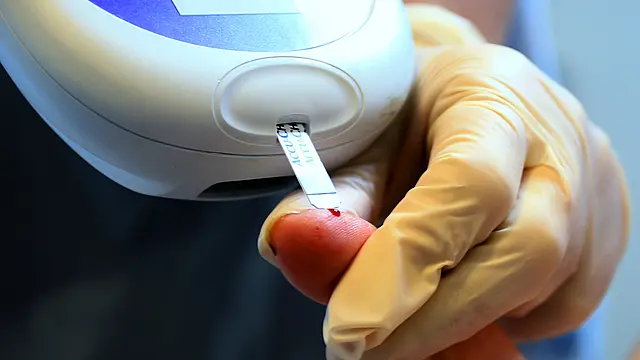The research identifies 34 risk factors that are thought to increase (19) or decrease (15) the risk of developing the condition.
It also identifies a further 21 suggestive risk factors where evidence was not quite as strong.
The other 18 risk factors were depression, systolic blood pressure, starting smoking, lifetime smoking, coffee (caffeine) consumption, blood plasma levels of the amino acids isoleucine, valine and leucine.
They also included liver enzyme alanine aminotransferase, childhood and adulthood body mass index (BMI), body fat percentage, visceral (internal) fat mass, resting heart rate, and blood plasma levels of four fatty acids.
To identify possible risk factors for type 2 diabetes, researchers conducted a review of meta-analyses and review articles in the PubMed database and found 1,360 relevant articles.
Findings should inform public health policies for the primary prevention of type 2 diabetes
They found a total of 97 risk factors that could be investigated using a method called Mendelian Randomisation (MR).
This uses genetic variation as a natural experiment to investigate the causal relations between potentially modifiable risk factors and health outcomes in observational data.
The study was carried out by Associate Professor Susanna Larsson and Shuai Yuan of the Karolinska Institutet in Stockholm, Sweden.
They found evidence of causal associations between 34 exposures (19 risk factors and 15 protective factors) and type 2 diabetes.
Insomnia was identified as a novel risk factor, with people with insomnia being 17% more likely to develop the condition than those without.
The 15 exposures associated with a decreased risk of type 2 diabetes were plasma alanine (an amino acid), high density lipoprotein (good cholesterol) and total cholesterol, and the age at which puberty started in women (menarche).
The others included testosterone levels, sex hormone binding globulin levels (adjusted for BMI), birth weight, adulthood height, lean body mass (for women), four plasma fatty acids, circulating vitamin D and years of education.
After adjusting for adulthood BMI, eight risk factors remained statistically significantly associated with type 2 diabetes risk, suggesting they are independent of body weight, the researchers say.
Insomnia remained as one of these factors, but the increased risk for those with insomnia compared with those without fell from 17% to 7% after adjustment for BMI, indicating that part of the effect of insomnia on the risk is mediated by BMI.
Systolic blood pressure, lifetime smoking and levels of liver enzyme remained as risk factors.
The researchers found that increasing total cholesterol, good cholesterol, testosterone levels and sex hormone levels remained as protective factors after adjustment.
Among the further 21 suggestive causal factors for type 2 diabetes were alcohol consumption, breakfast skipping, daytime napping, short sleep, urinary sodium levels, and certain amino acids and inflammatory factors.
The authors conclude: “Our study confirmed several previously established risk factors and identified novel potential risk factors for type 2 diabetes using the latest summary-level data.
“Findings should inform public health policies for the primary prevention of type 2 diabetes.
“Prevention strategies should be constructed from multiple perspectives, such as lowering obesity and smoking rates and levels, and improving mental health, sleep quality, educational level and birth weight.”







